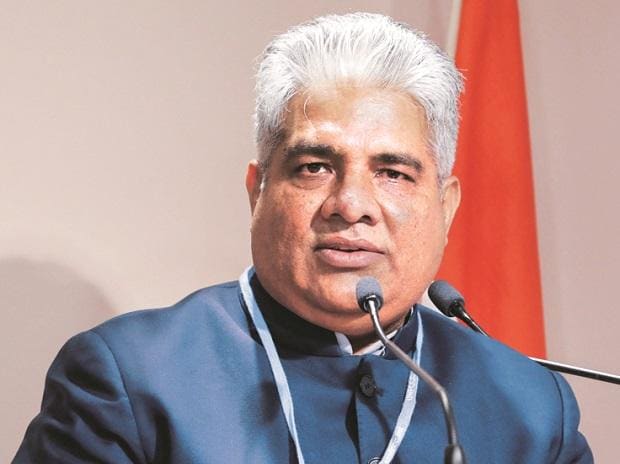[ad_1]
With a seven-point agenda, the Indian government for the first time has submitted its Long-Term Low Emission Development Strategy (LT-LDES) at the Conference of Parties (COP27) in Egypt. The agenda focuses on low-carbon electricity and transport systems, energy-efficient urban infrastructure, low-emission industrial systems, carbon mitigation technologies, enhanced forest cover, and economic and financial aspects of low-carbon development.
Leading the Indian delegation, Minister for Environment, Forest and Climate Change Bhupender Yadav submitted the strategy to the United Nations Framework Convention on Climate Change (UNFCCC) on Monday.
“This strategy is the product of extensive consultations inside the government and with other stakeholders. The two themes of climate justice and sustainable lifestyles are emphasised in our strategy, alongside the UNFCCC principles of equity and common but differentiated responsibilities and respective capabilities,” Yadav said.
“It also imbibes the spirit of LiFE (lifestyle for environment),” he added.
India is now among 57 nations that have submitted their LT-LDES under the Paris Agreement. The Article 4, paragraph 19 of the agreement states: “All parties should strive to formulate and communicate long-term low greenhouse gas emission development strategies, mindful of Article 2 taking into account their common but differentiated responsibilities and respective capabilities, in the light of different national circumstances.”
During COP26 at Glasgow last year, the decision text stated: “Parties that have not yet done so to communicate their LT-LEDS by COP27 (November 2022).”
“India’s LT-LEDS is an important statement of intent to pursue low-carbon strategies for development, and a sound beginning toward doing so.
Having clear ‘buckets’ for action, as the strategy does, is very important to mobilise bureaucracies and send clear signals for action to the private sector,” said Navroz Dubash, professor, Centre for Policy Research.
For the development of low-carbon electricity systems, the focus would be on renewable energy, rational utilisation of national resources with due regard to energy security, and planning an energy transition away from fossil fuels by an optimal energy mix. Low-carbon transport would be driven through increased use of biofuels, especially ethanol blending with petrol, electric vehicle penetration, and increased use of green hydrogen.
Yadav highlighted India’s aspirations to maximise non-fossil fuel-dependent growth in the transport sector. “Ethanol blending will reach 20 per cent by 2025, and a strong modal shift to public transport for passenger and freight. Also, the government launched the National Hydrogen Mission back in 2021 to make India a green hydrogen hub,” he said.
The LDES will also focus on improving energy efficiency through the Perform, Achieve, and Trade (PAT) scheme, National Hydrogen Mission, high-level of electrification, building a circular economy, and exploring options for hard-to-abate sectors, such as steel, aluminium, and cement.
About global climate funding, the strategy report said: “Given the priorities of poverty eradication, increasing employment and incomes, increasing resilience to climate change, and reaching a new level of prosperity, low-cost international climate finance is essential to achieve the objectives of low-carbon development.”
Yadav called upon developed countries to elaborate on their climate targets. “In a ‘COP of Implementation’, it is essential to make progress on adaptation and loss and damage. Now is the time to tell the developing world how the promise of $100 billion is to be met. The world would like to know how the resources for meeting the world’s adaptation needs, whose estimates are rising constantly, are to be mobilised,” he said.
The Indian government in its statement, along with the strategy, said the transition to a low-carbon development pathway should entail several costs pertaining to the development of new technologies, new infrastructure, and other transaction costs.
“Provision of climate finance by developed countries will play a very significant role and needs to be considerably enhanced, in the form of grants and concessional loans, ensuring scale, scope and speed, predominantly from public sources, in accordance with the principles of the UNFCCC,” said the statement.
[ad_2]
Source link



